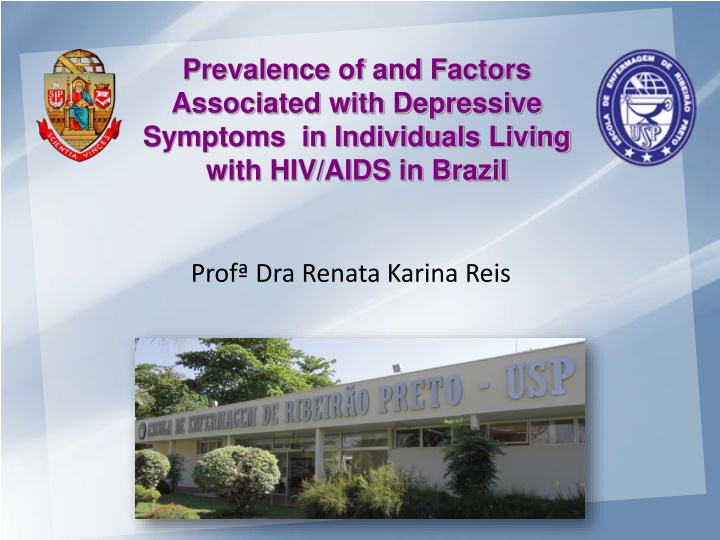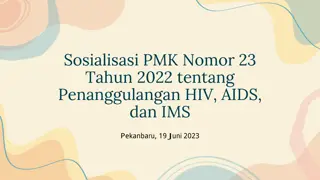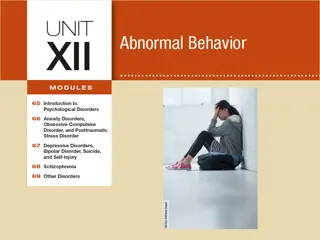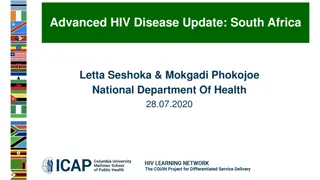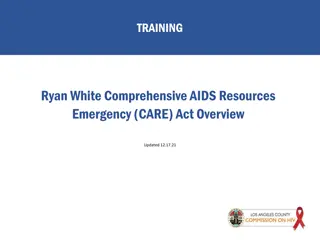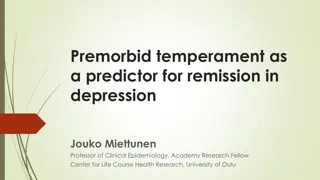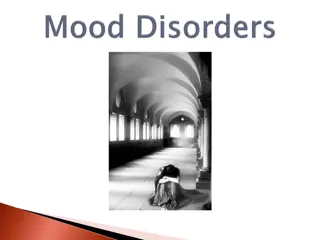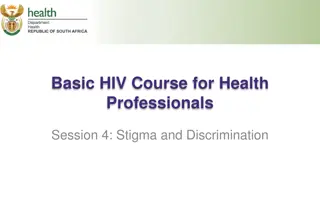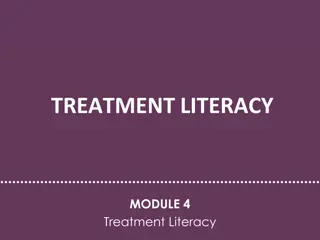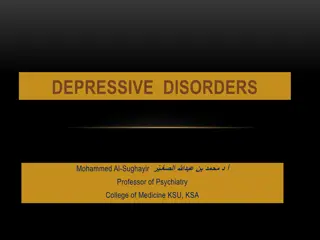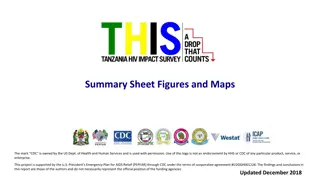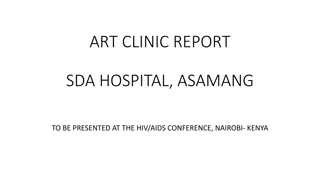Prevalence of Depressive Symptoms in Individuals Living with HIV/AIDS in Brazil
People living with HIV/AIDS face challenges like low self-esteem and loss of social identity, leading to depressive symptoms. This study aims to identify the prevalence and associated factors of depression in this population in Brazil.
Download Presentation

Please find below an Image/Link to download the presentation.
The content on the website is provided AS IS for your information and personal use only. It may not be sold, licensed, or shared on other websites without obtaining consent from the author.If you encounter any issues during the download, it is possible that the publisher has removed the file from their server.
You are allowed to download the files provided on this website for personal or commercial use, subject to the condition that they are used lawfully. All files are the property of their respective owners.
The content on the website is provided AS IS for your information and personal use only. It may not be sold, licensed, or shared on other websites without obtaining consent from the author.
E N D
Presentation Transcript
Prevalence of and Factors Associated with Depressive Symptoms in Individuals Living with HIV/AIDS in Brazil Prof Dra Renata Karina Reis
Introduction People living with HIV / AIDS also experience difficulties resuming or maintaining their life projects and often experience conflict and situations of embarrassment, vulnerability, and the violation of their rights as citizens HIV infection as a chronic condition brought with it new challenges for care delivery because the side effects of the prolonged use of the antiretroviral therapy (ART) leads to the appearance of lipodystrophy and changes in body perception.
Introduction These situations and conditions may lead to low self-esteem, lack of belonging, and loss of social and psychological identity, which may trigger psychological distress and mental disorders Among mental disorders, depression is one of the most common comorbidities with a high prevalence among HIV/AIDS both in Brazil and in other countries people living with
Introduction Depressive symptoms are a common mental disorder and are characterized by sadness, loss of interest and guilt feelings that negatively impact one s ability to deal with life, adherence to antiretroviral therapy and affect quality of life. In this sense, the identification of depressive symptoms among people living with HIV/AIDS is an important interdisciplinary therapeutic directed to these individuals. step in promoting interventions
Objective Identify the prevalence of depressive symptoms and associated factors among people living with HIV/AIDS.
Methods This is a descriptive cross-sectional Non-probability sample of two services specializing in AIDS care in Ribeir o Preto, S o Paulo, Brazil Individual, private interviews, confidentiality of date; ethical aspects covered
Methods Semi-strucutured questionnaire socio-demografic (sex, age, income) and clinical aspects (CD4 cell count, comorbidities) and comportamentais (alcohol consumption/ how many times a week) variables The Beck Depression Inventory (BDI) was used to assess the intensity of depression The instrument s minimum score for each item is 0 and the maximum is 3, where 0 means the lack of depressive symptoms and 3 indicates the presence of symptoms. The final score is obtained by the sum of all the points
Results 331 PVHIV 167 (50,5%) men and 164 (49,5%) women 176 (53,2%) didn t have any co-morbidity or associated co- infection 267 (80,7%) had CD4 T cells grater than 200/mm 29,6% was the prevalence of BDI scores indicative of depression
Percentage of depression symptoms between men and women 45 40 35 30 25 Absent 20 Present 15 10 5 0 Men Women
Association of income and depression symptoms 70 60 50 40 Absent 30 Present 20 10 0 < 3 minimum wage > 3 minimum wage
Association of CD4 cells and symptoms of depression 35 30 25 20 Absent Present 15 10 5 0 > 500 cells/mm 499 - 200 cells/mm < 200 cells/mm
Factors associated with symptoms of depression among people living with HIV/aids Depression Raw OR IC 95% Adjusted OR IC 95% Variable Levels Absent Present LI LS LI LS Sex Male 130(77,8%) 37(22,1%) 2,081 1,283 3,374 1,694 1,002 2,863 Female 103(62,8%) 61(37,2%) 1 1 Income > 3 35(89,7%) 4(10,2%) 4,154 1,435 12,028 3,248 1,076 9,803 < 3 198(67,8%) 94(32,1%) 1 1 CD4 cells 500 107(80,4%) 26(19,5%) 2,816 1,459 5,435 2,739 1,387 5,409 499 200 88(65,6%) 46(34,3%) 1,309 1,309 2,417 1,202 0,634 2,277 200 38 (59,3%) 26(40,6%) 1 1
Discussion This study s results showed that 29.6% of the individuals living with HIV/AIDS presented depressive symptoms (BDI > 16) and the factors associated with depression were sex, income, and immunological status Studies conducted in Brazil addressing people with HIV/AIDS report that the prevalence of depressive symptoms may range from 25,8% and 53,3% DAL-B , 2013; Reis et al., 2011; Schimit & Silva, 2009; Silveira al., 2012; Mello & Malbergier, 2006
Discussion Association between depression and clinical diseases occurs frequently, worsen both an condition and the clinical disease itself, leading to lower adherence to a therapeutic regimen, in addition to greater levels of morbidity and mortality Additionally, there is a perception that symptoms are merely adverse consequences of diseases (hopelessness and low self- esteem) which psychiatric may individual s Teng, Humerio & Demetrio, 2005
Discussion The socio-demographic aspects revealed that depressive symptoms were associated with sex, while men were 1.6 times more likely (CI 95% 1.0-2.8) not to develop depressive symptoms than women Women in general have a higher prevalence of chronic diseases, including mood mental disorders, such as depression Barros, C sar, Carandina &Torre, 2006; Bromet et al. 2011; Viana & Andrade, 2012
Discussion Income was a risk factor associated with depressive symptoms: individuals with lower incomes (less than 3 times the minimum wage) were 3.2 times more likely (CI 95% 1.0- 9.8) to experience depressive symptoms than individuals with higher incomes This finding is also observed in studies reporting that financial hardship is associated with depression among individuals with HIV/AIDS Silveira et al. 2012; Rodkajaer, Laursen, Balle & Sodemann, 2010
Discussion The results show that individuals with CD4 T cells below 200/mm3 are 2.7 times more likely (CI 95% 1.3-5.4) to develop depression than those with CD4 T cells above 500/mm3 These factors such as depression may affect clinical and immunological responses, as reported in other studies), reinforcing the importance of the early detection depression results suggest that psychosocial and treatment of ICKOVICS et al. 2001; PENCE et al. 2007; PRIMEAU et al. 2013
Final Consideration This study s results indicate a high prevalence of depressive symptoms among people living with HIV/AIDS in the studied services and show that risk factors include sex, income and immunological condition. There is a need to systematically assess the presence of depressive symptoms in people living with HIV/AIDS during clinical practice, since these are prevalent in this population.
Final Consideration The authors declare the absence of conflicts of interest concerning this article. Contact Author: Renata Karina Reis. University of S o Paulo. Nursing School of Ribeir o Preto. Department of General and Specialized Nursing. Av. Bandeirantes, 3900. Neighborhood: Monte Alegre. CEP: 14040- 902, Ribeir o Preto, SP, Brazil Email: rkreis@eerp.usp.br
References Alencar, T.M.D., Nemes, M.I.B., Velloso, M.A. (2008). From "acute AIDS" to "chronic AIDS": body perception and surgical interventions in people living with HIV and AIDS Ci nc. sa de coletiva, 13(6):1841-1849. doi.org/10.1590/S1413-81232008000600019. Ara jo, M.A.L., Queiroz, F.P.A., Melo, S.P., Silveira, C.B., Silva, R.M. (2008). Pregnants infected with HIV: Facing and perception of a new reality. Cienc Cuid Saude. 7(2):216-223 B -Dal, M.J., Manoel, A.L., Beltran Filho, A.O., Silva, B.Q.T., Cardoso, Y,S, Cortez, J., Tramujas, L., Silva, R.M. (2013). Depressive Symptoms and Associated Factors among People Living with HIV/AIDS. Journal of the International Association of providers of AIDS Care. 19:1-5 Bromet, E., Andrade, L.H., Hwang, I., Sampson, N.A., Alonso, J., Girolomo, G. et al. (2011). Cross- national epidemiology of DSM-IV major depressive episode. BMC Medicine 9:90:2-16 Ciesla, J.A., Roberts, J.E. (2001). Meta-analysis of the relationship between HIV infection and risk for depressive disorders.Am. J Psychiatry, 158(5)-725-730 Gorenstein, C., Andrade, L., Filho Vieira, A.H.G., Tung, T.C.; Artes, R. (1999). Psychometric Properties of Portuguese Version of Beck Depression Inventory on Brazilian College Students. Journal of Clinical Psychology. 55(5), 554-562.
